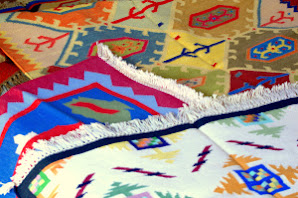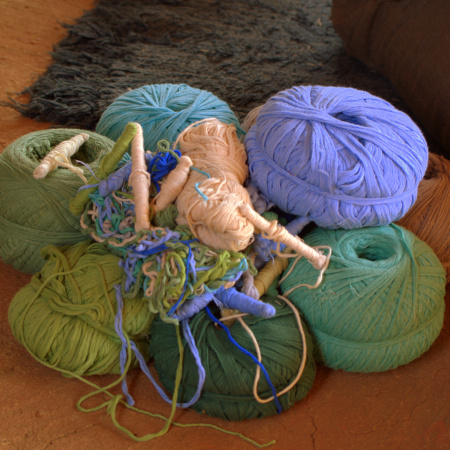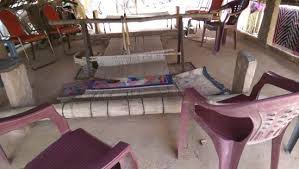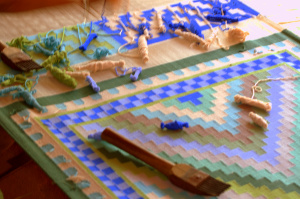
Rajasthan is well known for its traditional, colorful art and grand forts and Palaces. This time I went to explore the blue City of Rajasthan – JODHPUR
Usually, I start my travel with quintessential monuments of the city I am visiting, but this time I planned to start differently. I started my tour at the famous Jodhpur’s Bishnoi Village Tour.
I started with Salawas village in Jodhpur, which is also known as “WEAVER’S VILLAGE” where weavers work together to create magic carpets locally referred to as DURRY’S. Weaving a Durry is 300 years old traditions that are woven at home by a family in the village and thereafter sold.

Wondering! WHAT’S DURRY’S?
Basically, Durry is the floor covering, somewhat resembling a rug, woven on a loom using cotton, silk, jute, or wool yarn. It is used as a substitute for carpets, as a rug. At home, one can use them for a table cover or cover corridors.
HOW IS IT MADE?
Durry weaving techniques are extensively popular in JODHPUR and plenty of tiny villages in Rajasthan. Durries are made in vibrant colors by skilled artisans on a traditional horizontal loom or vertical loom. In Rajasthan, looms are called Pit looms which are also used for weaving wherein weaver sits in a pit and used their feet in weaving.

THE DESIGNS & THE SIZES

There are numerous designs of durry; the common ones are different mix-match of color stripes and geometrical designs. Animals and motifs design are rare however are often made on traveler’s demand.
The standard size of durry is 3 x 5 feet, 4 x 6 feet, and 6 x 9 feet. Depending upon the size, pattern, and material, durry can be used for a variety of purposes. Like the smallest one is 12” by 12” and used as a cover for telephone stands, box or flower vase. For yoga/meditation, the ideal size is 24” by 24” known as aasan.
Durries are in growing demand globally.Visit “ROOPRAJ DURRY UDYOG” is a part of the Bishnoi Village Tour.
Roopraj Durry Udyog is owned by Mr.Roopraj and who follows the family traditional work from the past 27years. He has learned this skill from his grandfather and in this village, more than 50 people including men and women earn their livelihood by weaving carpets.
